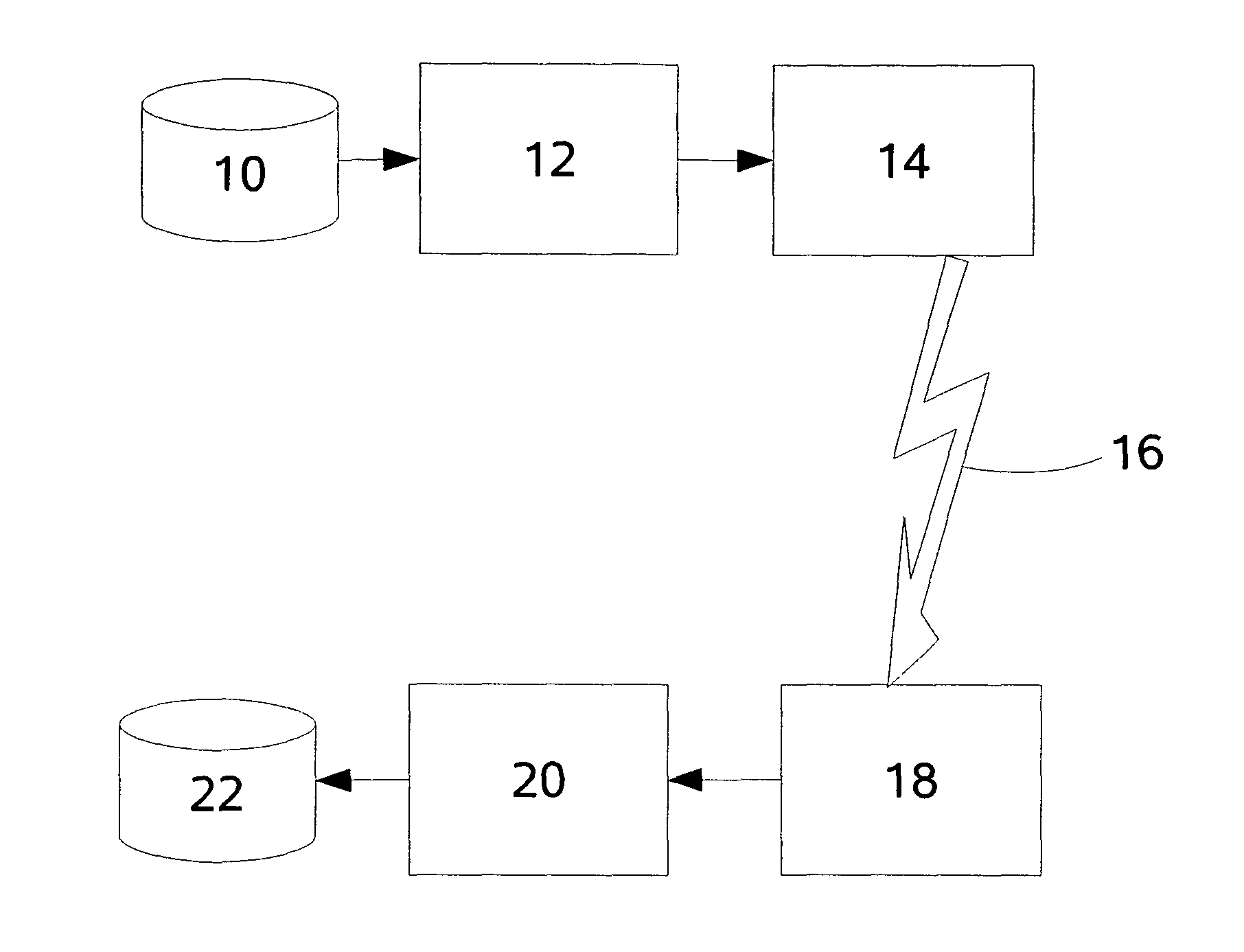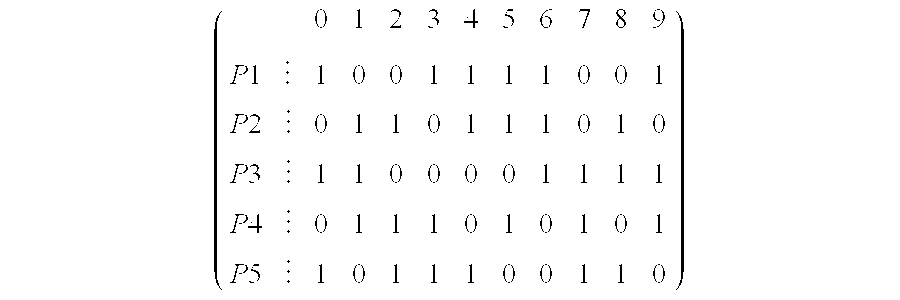Encoding scheme, and a decoding scheme using a series of LDPC codes based on finite inversive spaces
a decoding scheme and ldpc code technology, applied in the field of encoding scheme and decoding scheme, can solve the problem of low complexity of the decoder
- Summary
- Abstract
- Description
- Claims
- Application Information
AI Technical Summary
Benefits of technology
Problems solved by technology
Method used
Image
Examples
Embodiment Construction
[0030]An embodiment of the invention will now be described in detail, by way of example, with reference to the accompanying drawings, in which:
[0031]FIG. 1 is a block diagram of a data transmission system using a coder and a decoder embodying the invention.
[0032]As has been discussed, every LDPC code is characterised by the parity matrix H. Therefore, a specific LDPC code can be created by defining its parity-check matrix H and then using that matrix in a method of LDPC encoding.
[0033]Central to embodiments of the invention is the use of a geometric structure that is known as “inversive space” in the creation of a parity-check matrix H. Within such a space it is possible to identify a particular class of geometrical objects known as “pencils”, which are then used to derive a further incidence structure that is called a (0,1)-geometry. The incidence matrix of this geometry is a very sparse binary matrix that is used as the parity-check matrix H for a low-density parity-check (LDPC) c...
PUM
 Login to View More
Login to View More Abstract
Description
Claims
Application Information
 Login to View More
Login to View More - R&D
- Intellectual Property
- Life Sciences
- Materials
- Tech Scout
- Unparalleled Data Quality
- Higher Quality Content
- 60% Fewer Hallucinations
Browse by: Latest US Patents, China's latest patents, Technical Efficacy Thesaurus, Application Domain, Technology Topic, Popular Technical Reports.
© 2025 PatSnap. All rights reserved.Legal|Privacy policy|Modern Slavery Act Transparency Statement|Sitemap|About US| Contact US: help@patsnap.com



